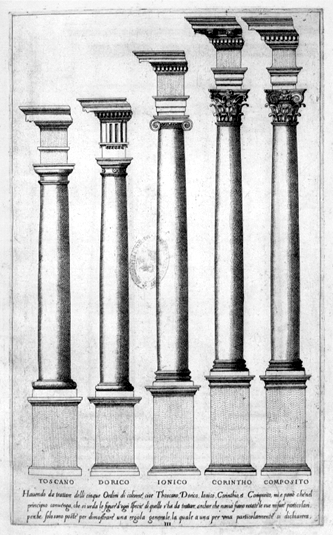

The orders of architecture form a system of ornamented supporting (vertical) and supported (horizontal) members of post and beam construction developed in buildings of ancient Greece, expanded and further developed in ancient Rome, and systematized and codified in Renaissance Italy. An order of architecture has columns or pilasters (supporting members) and an entablature (supported member). The five traditional orders of architecture are Tuscan, Doric, Ionic, Corinthian, and Composite.
The Tuscan Order is relatively short and plain, and the Corinthian and Composite
Orders are relatively tall and elaborately ornamented. The Ionic Order falls
in between the extremes in both the relationship of its height to the diameter
of the column and in degree of ornamentation. Horgan and Slattery likely selected
the Ionic Order for the fašade of the Fiss, Doerr, & Carroll building
because its proportions provided the best fit to the height of the wall.